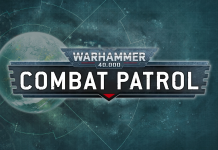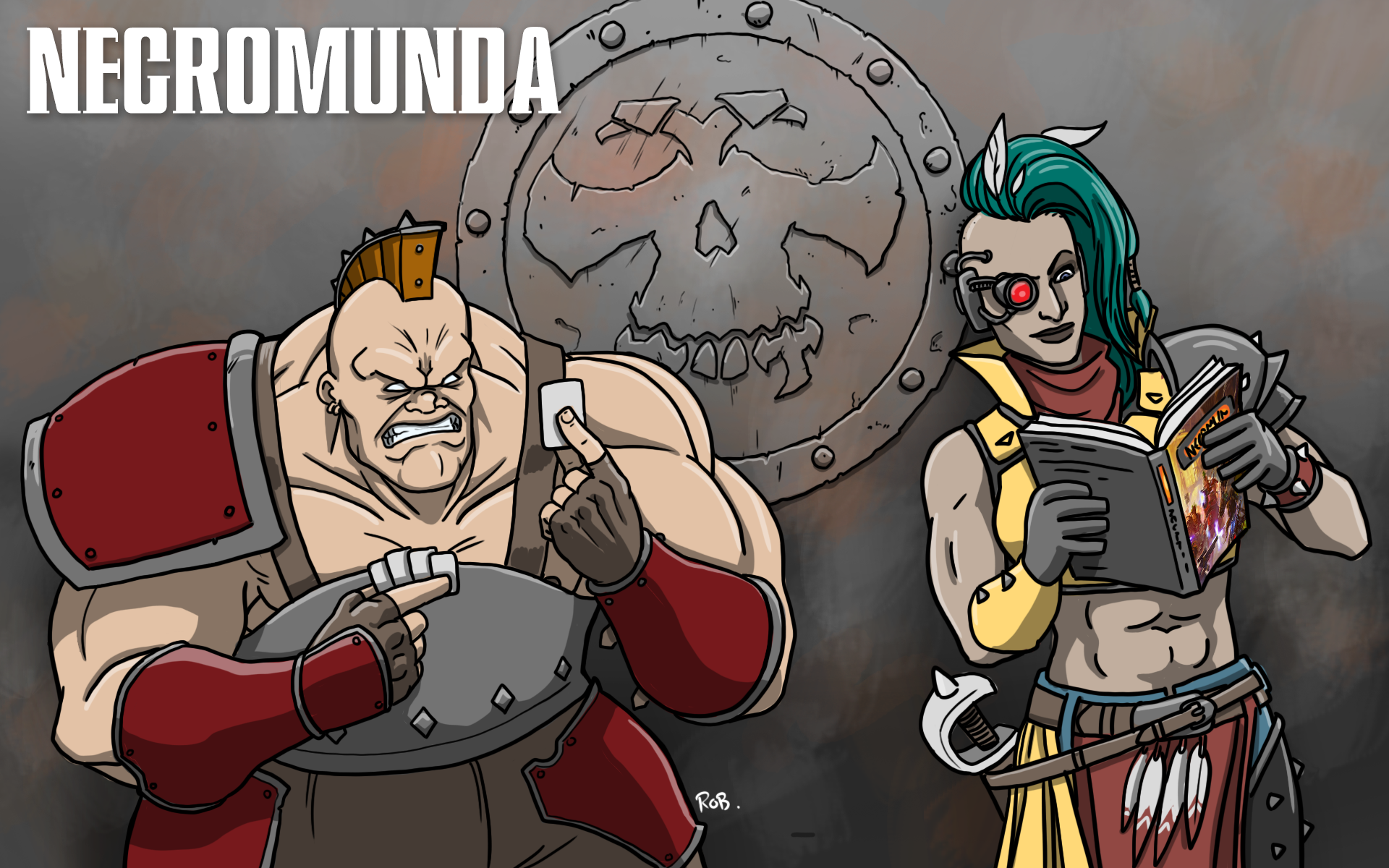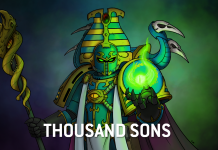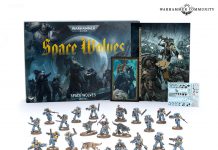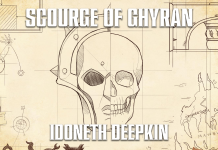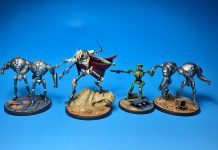I’ve made the age-old mistake of asking my local gaming club if anyone would be interested in trying some Path to Glory. This of course garnered far more interest than I anticipated and a few hours later found myself organising it all. Fortunately a friend, and a player for this campaign, has run some before and has been able to help guide me as well.
And honestly I’m incredibly excited to get it off the ground. Our local games club meets up in a church hall on the outskirts of London and, before lockdowns, was predominantly 40k, board games, DnD, and Magic the Gathering with the occasional Age of Sigmar game being played. Over the last year we’ve consistently had 3 tables of AoS being played during games night and this campaign has gotten other players to pick up AoS too.
The following are the steps to creating your army for a Path to Glory Campaign as well as a single house rule that I’m implementing for the sake of fun. I don’t know yet if it’s something that can be exploited but I’m also hoping that my group (of now over 16 people total) will be able to hold back the reigns in the interest of story and narrative. If you’re reading this, that means you Higgsy.
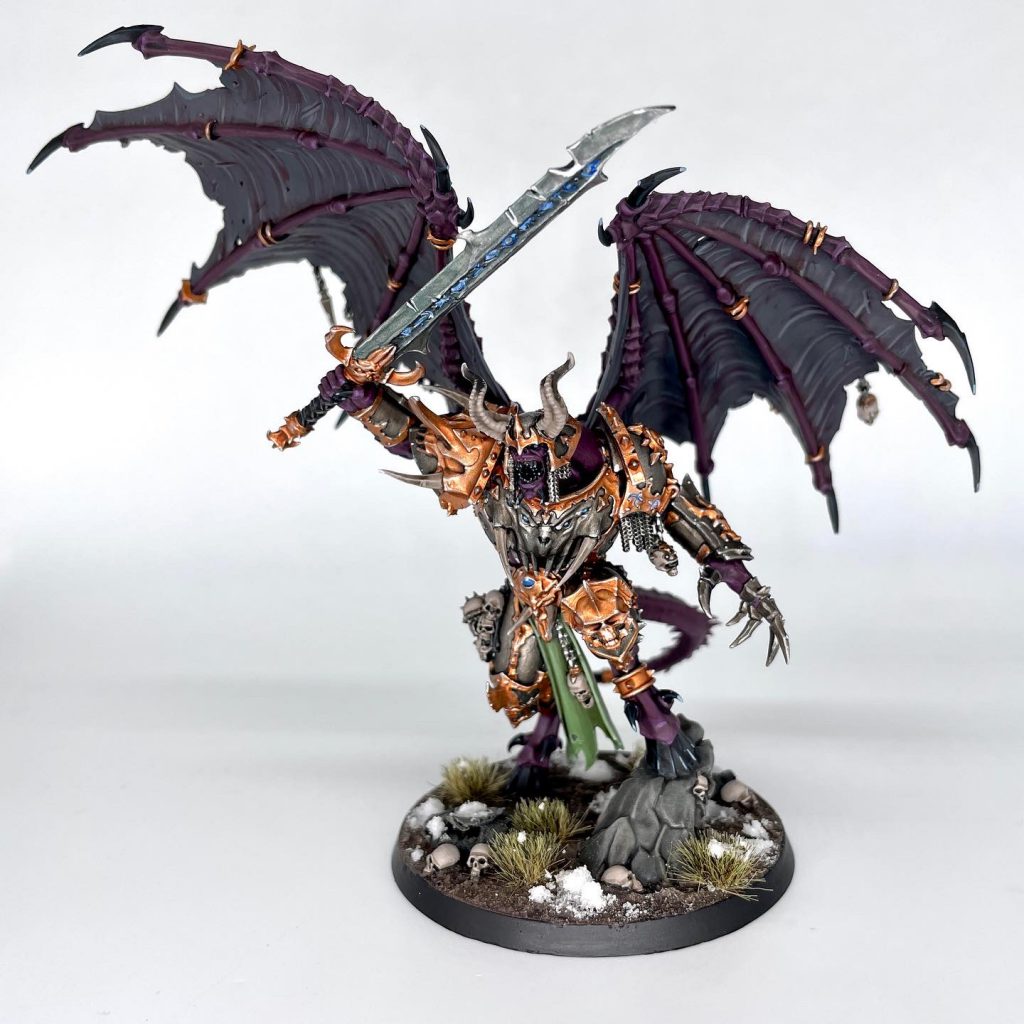
Creating a Narrative
First and foremost this is called “Narrative Play” for a good reason. This mode gives you the chance to use units or heroes you otherwise might not and forge a narrative with your General and army. The best way forwards is to choose what you think is cool, not just what’s “good”.
I’m setting up a Kharadron Overlord roster lead by an Endrinmaster Alaric Getgold that’s recently had to take over his father’s pioneering company after a particularly bad accident in Ghur over the Coast of Tusks involving some territorial Idoneth Deepkin…
Our campaign is set in Aqshy. Getgold and Sons Pioneering Co has gotten wind of a new vein of aether-gold that’s opened up near The Great Parch so they have to journey out and see where this vein is. A simple backstory to the roster opens up the reason as to why the force is there, the sort of force that might show up because of it, and sets up a grudge against the undersea Aelves as well, in case any show up.
Choose Faction and Realm
First you pick what army you want to build up and play for your Path to Glory. Essentially these are the different battletomes to choose from, such as Maggotkin of Nurgle, Fyreslayers, Nighthaunt, etc. Once you’ve chosen your faction you can then choose which sub-faction your army will be from. Sub-factions are listed in your battletome and will give different benefits to your army in battle. You cannot change your sub-faction later on, so be careful of your choice and try to think ahead of how you want your force to look.
In the core rules the realm that your army is from makes no in-game difference, it’s just there for narrative purposes. Different realms represent the 8 different winds of magic, manifested in physical form in the cosmos. The realms are extremely large, each being larger than the Old World was and each with various biomes across their physical lands. At the edges of each realm the physical lands and laws of physics start to break down and become more magical, manifesting as the wind of magic. For example within Aqshy, the realm of fire, the entire realm isn’t just on fire and hot, there are oceans, mountains, jungles, forests, even snow! As you travel out towards the edges of Aqshy the lands do get hotter and less sustainable for life.
The realms are connected to each other in the cosmos, Hysh and Ulgu giving day and night to the other realms as they orbit one another, but also by Realmgates which allow passage between the realms. The 8 different realms are:
- Azyr, the Realm of Heavens
- Aqshy, the Realm of Fire
- Shyish, the Realm of Death
- Ghyran, the Realm of Life
- Hysh, the Realm of Light
- Ghur, the Realm of Beasts
- Chamon, the Realm of Metal
- Ulgu, the Realm of Shadows

Choose Starting Size and Territories
We are starting our Path to Glory at 600 points, the Vanguard size. This gives players 1 starting territory, 5 starting Glory points and able to take up to 6 units on their starting roster. You get to pick which territory you start with, which increases the limit on a specific kind of unit you can include your roster. When you set up your own Path to Glory you can instead choose to start at 600, 1,000, 1500, or even higher points. The higher you start the larger the games will get over time, so starting small is ideal. At either 600 or 1,000 and grow organically. I’m not setting any hard and fast points that players must grow to by certain dates, instead allowing players to play in their own time and decide how large their games are when they set them up.
You also begin with a Stronghold. This allows you to control up to 3 Territories, 3 Barracks, and be able to create up to 1 Outpost. Your Stronghold can be upgraded and expanded throughout the campaign. Your Stronghold also determines how many enhancements you can have.
Your unit selection on your starting roster is limited and can have up to:
3 Heroes 1 Monster 1 War Machine 1 Wizard 1 Priest 1 Reinforced Unit 1 Allied Unit
Depending on your starting Territory, you can increase one of those by +1. Certain armies will naturally gravitate towards one of these, while others might not need to have any of these increased for their starting roster. Armies like Soulblight Gravelords or Lumineth will likely want to increase their Wizard allotment by 1 from the start, for example. If there’s nothing you need more of for your starting roster, think ahead of what you’ll want to add to your force so that you have the available space for it. You will also be able to increase these limits as you progress through your path to glory via additional barracks.
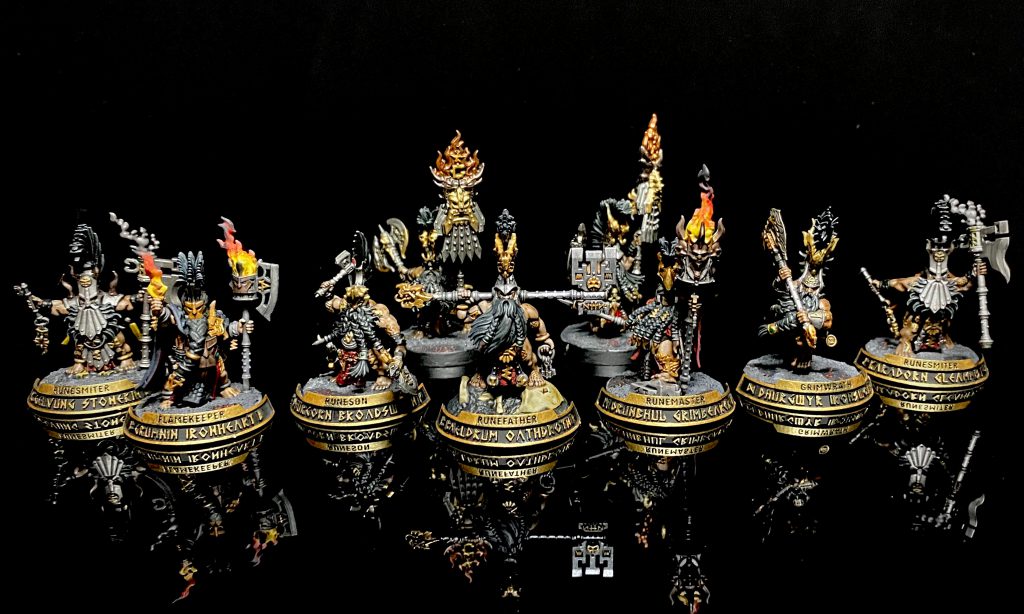
Order of Battle
This is your entire army listed out unit by unit but also any endless spells, invocations, or battalions that you might include as well. The first unit you add is your Warlord who is the leader of your Path to Glory army and will be your General in each game. Your Warlord must be a Hero (that is also a Leader) and also not be Unique (so, not a named hero such as Nagash). Of course it has to be from your army’s Faction, as well. Then add your units up to the starting points of the campaign.
Some units are not added to your order of battle, and will be clearly stated under your faction’s path to glory rules where this applies. Generally speaking these are Daemon units or “Summonable” keyword units for Death armies. Instead of adding these to your order of battle these are used in games depending on the heroes you do have on your order of battle and your faction’s rules will tell you how many you can take. You cannot exceed the agreed points limit for a game, however, even with these units that are not on your order of battle.
House Rule – The only house rule here that I’ve implemented, due to interest with the latest Daemon Prince, is to allow the starting Warlord to be a Daemon Prince and be taken in a Maggotkin, Blades of Khorne, Disciples of Tzeentch, or Hedonites of Slaanesh army. It has to have the correct mark, of course, and gains the right keywords to be able to use the army’s abilities.
You also get to choose 1 Core Battalion or Warscroll Battalion for your army to make use of, these are detailed in the Core Rules and your army’s battletome. While you may be familiar with Core Battalions, Warscroll Battalions are like Battalions from 2nd edition, asking for specific units but giving much more unique and flavorful bonuses. These don’t cost your army any points so you might as well choose one, even if your starting army doesn’t meet its requirements you can keep it on your order of battle until you can make use of it.
Next, you can choose up to 1 endless spell or invocation, paying its points cost as normal. You can take a quest later on to add one to your order of battle, but if you have the points spare now, even if you don’t have any wizards or priests yet, it’s easy to add one now so you can go off on other quests.
Faction Terrain is not added to your order of battle, and isn’t even used in every battle either. The battleplan that you’re playing will tell you if your army is able to field their faction terrain or not.
As with anything else you are able to add more units, battalions, endless spells, invocations etc as you progress!
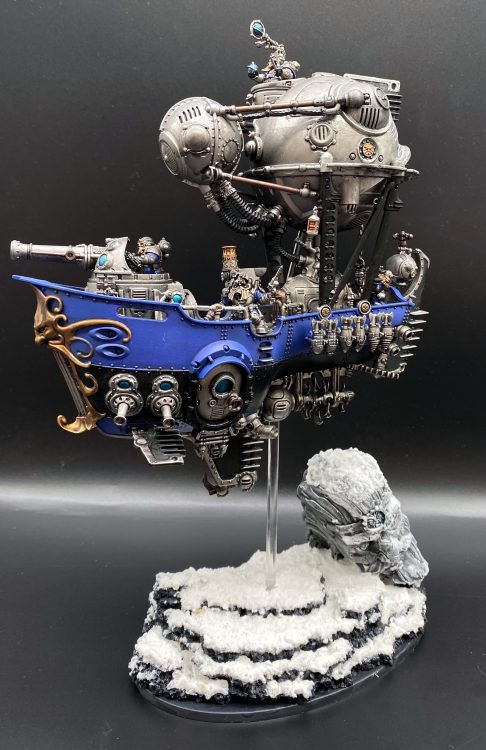
Example Order of Battle – Getgold and Sons Pioneering Co. – 550 points
Custom Sky Port:
Artycle - Master of the Skies Amendment - Prosecute Wars With All Haste Footnote - Without Our Ships, We Are Naught
Units:
Alaric Getgold - Warlord, Endrinmaster with Endrinharness (80 points) Olbark Sternstorm - Navigator (100 points) Gunnery Sergeant Grimm Grudgefist - Thunderers (130 points) The Golden Drake - Frigate (240 points)
A scouting party as much as anything else, the 7 models will all happily fit inside of the Frigate which can fly around attempting to achieve quests. Alaric is the Warlord, after all it is his company now, and is leading this party personally to prove to crew and company that he is worthy of it. Navigator Olbark has worked with the company for a number of decades and is there to guide the ship through storms safely, with the quickest route possible!
Core Enhancements
There are two different kinds of enhancements: core and bonus. Core ones are given by core rules and any of your army’s faction abilities. Bonus, on the other hand, are gained through completing quests to add further enhancements to your order of battle.
Your Core Enhancements follow the core rules for enhancements and you note your choices down on your order of battle. You do not have to choose which hero will have each one now, they simply go on your order of battle and you can choose to give them to heroes in your games. Your army gets 1 of each enhancement, some factions or other rules may give you additional ones as well (such as the Fyreslayer Greyfyrd Lodge giving 2 additional artefacts of power). Enhancements are:
Artefacts of Power Command Traits Spells Prayers Triumphs Unique Enhancements Mount Traits
Command traits are only usable by your General, who can only have 1 command trait at any given time in game. Artefacts are to be used by heroes in your army, some will have further restrictions on which heroes can use them. Unique enhancements will be described in your own battletome, if your army has any, such as the Kharadron Overlords Great Endrinworks. Mount traits will also be defined in your battletome.
Spells and Prayers are an odd one here, because instead of needing to choose a specific prayer or spell each priest or wizard respectively in your army will get to choose one. So if you have 2 wizards on your order of battle, they do not need to know the same spell but can each choose a single spell to know.
Your First Quest
Now you’re ready to pick your first quest! Pretty straightforward: pick the quest that you want to achieve first. There are core rule quests to choose from and each battletome will have a unique set of quests you can choose from as well. Write down your quest on your quest log, some quests will only require one game to achieve whereas others may take multiple. Depending what you choose you’ll either gain more Glory, Renown, or be able to add to your order of battle in some other way.
The bonus enhancements that you gain through questing are stored in your vault which has limited capacity, so don’t go adding too many too soon! Your starting vault can hold up to 6 additional of each enhancement, however, which is a sizable amount and it’ll be unlikely you reach that capacity any time soon. When you set up for a path to glory battle, the battleplan will list out exactly how many bonus enhancements you are allowed to use in that game.
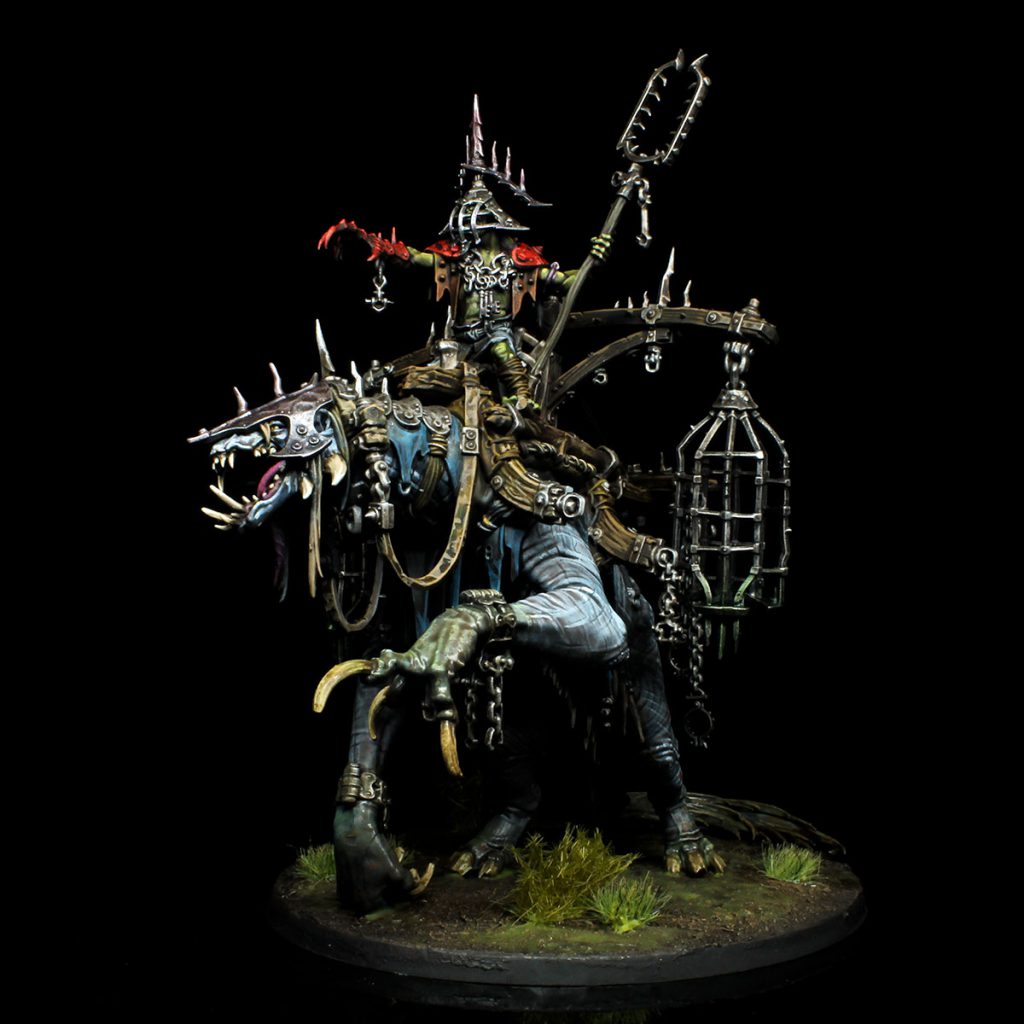
Go forth for Glory!
And now your starting roster is all set up and ready for your first path to glory game! After your game you then go through the after-battle sequence where you gain glory, renown, and units that died during the battle may suffer long-lasting injuries or even be removed from your order of battle! We’ll look at all of that next time.

